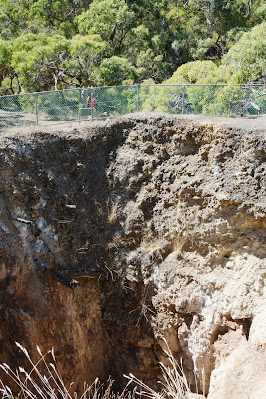When we first moved to the Fleurieu Peninsula in 2015 we set off exploring almost immediately. One of our first destinations was the ruins of an old mining town about 50kms west of our home near the Deep Creek National Park. I remember that we loved the sense of history despite its desolate appearance. So when we headed for a walk in the Deep Creek area and discovered after some fruitless meanderings that the road we wanted did not exist (even though it was on our map) we headed for the Talisker mine site - at least we knew that was still there.
A bit of history to begin with: The area is an abandoned silver and lead mine founded in 1862 by the McLeod brothers who named it after their property Talisker on the Scottish isle of Skye. Established mostly by Cornish miners who brought with them their mining expertise, brawn and optimism, the site soon boasted deep shafts, smelters, and buildings to house the machinery. Nearby, they developed a town they called Silverton that had a bank, a hotel, a chapel, doctor and school. Amazingly, despite the inhospitable countryside, it was even on the Cobb & Co run.
Now, 160 years later, nothing remains of the town. All that is left are the crumbling remains of the buildings, the remnants of old mining equipment scattered about and the encroaching bush that one day will entirely engorge what is left of this once vibrant enterprise. When I visit ruins such as these I always wonder what the people would think if they could see their community as it is now.
While it was a perfect day for strolling with a warm sun and hardly a breath of wind, the contrast between the sunlit areas and the shade made it difficult to take good photos. But I persevered. Here's a selection of what we saw.






















Another place in South Australia for you to show me. Your last paragraph made me think of my Dad, who was a coal miner in the Rhondda Valley in his youth. The mine is now a tourist site with tours down the mine, etc. He couldn't get used to this new usage and, I think, felt angry and trivialised.
ReplyDeleteI still haven't read your book reviews. I will tackle them one by one.
XXXX